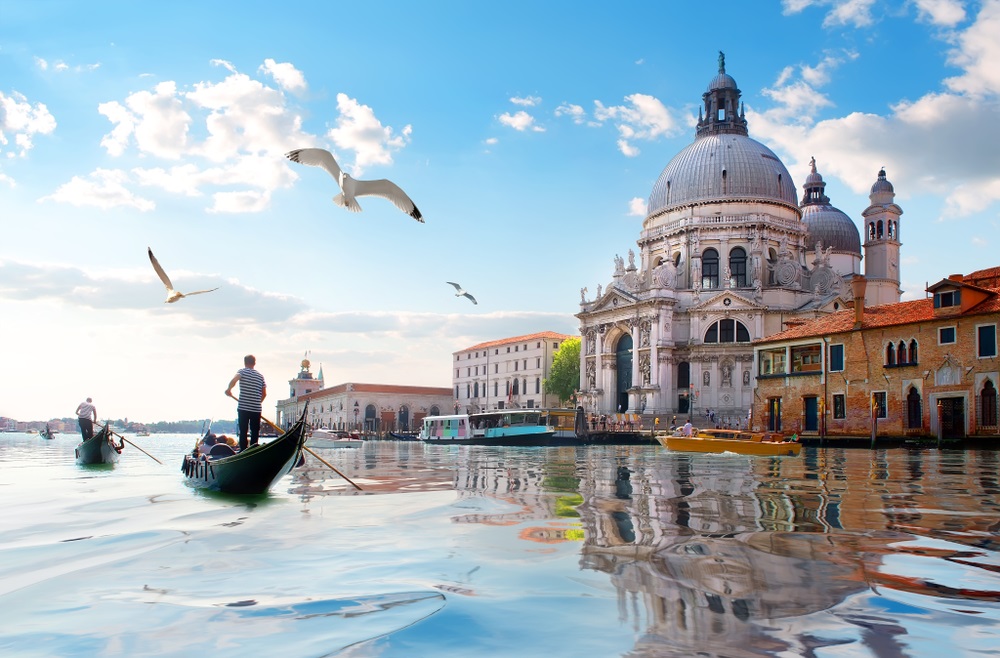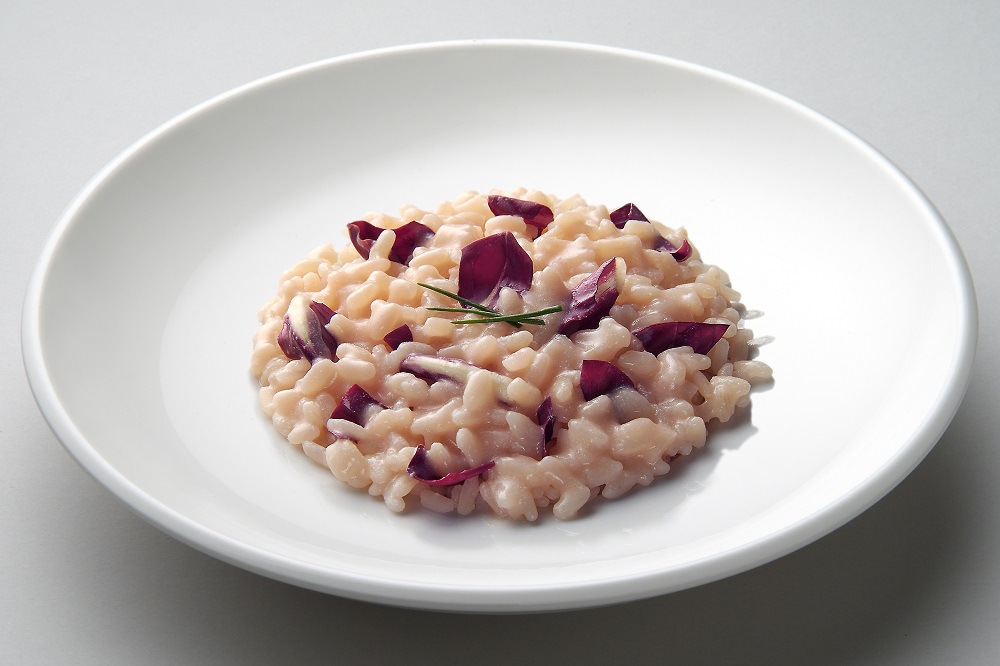
Savoring Piedmontese Cuisine: Exploring the Land of Barolo and Barbaresco
June 1, 2021
Explore Piedmont: Where Nebbiolo Wines & Unique Cuisine Blend Italian and French Influences, Butter-Based Delights, and Rice-Rich Dishes
By: Nicole Dickerson / Last updated: May 28, 2024
Estimated reading time: 8 minutes
Every year, travelers flock to the Veneto to visit the region’s world-famous capital, Venice. A city built on the Venetian Lagoon, Venice is a worthwhile destination full of ancient history, stunning palaces, and culinary delights. Yet, travelers would be remiss not to venture beyond the renowned city to experience Veneto’s spectacular landscapes and diverse Venetian cuisine.
Located in northeastern Italy, the Veneto stretches from the Adriatic Sea in the east to the Dolomite Mountains in the north, with the fertile Po River valley in between. Consequently, the region boasts a variety of foods from mountains to sea, all worth experiencing. While you’ll find more seafood-based dishes closer to the Adriatic, the inland mountain regions are known for rich ragùs, hearty stews, bollito misto, and even horsemeat specialties.

Guide to Italian Gastronomy and Cuisine: Read more
Regional Cuisine:
Belluno, Padua, Rovigo, Treviso, Venice, Verona, Vicenza
Moreover, the Veneto is home to some of Italy’s most famous wines and cheeses. Prosecco, Valpolicella, Amarone, Soave, and more are produced in various parts of the region. Italy’s popular PDO-protected Grana Padano, Asiago, and other cheeses are made here, too. The seven provinces of the Veneto each offer unique recipes, though culinary traditions are common throughout the region.
The Adriatic Sea and the Venetian Lagoon provide Venice and coastal zones with a plethora of seafood to enjoy. Anchovies, sardines, and pilchards are prominently featured in many Venetian dishes. While octopus, squid, mussels, clams, and prawns are also savored often.
In Rovigo, prized clams, mussels, and oysters find their ideal breeding environment in the River Po Delta. In this area where the Po River meets the Adriatic Sea, innovative oyster farming methods simulate tidal flows using a suspension system powered by clean energy sources. The process results in high-quality, delicate pink Tarbouriech oysters.
Venetian cuisine favors rice and polenta over pasta, unlike other Italian regional cuisines. Risotto is a main staple in the kitchens of the Veneto and is regularly served as a primo piatto. The Veneto sources much of its rice from Lombardy and Piedmont. However, the Vialone Nano Veronese IGP, located in the province of Verona, also produces a quality variety of rice.
Irrigated by the Tartaro River and natural water springs, the Vialone Nano Veronese IGP rice route connects twenty-four rice cultivation zones in Verona. If you visit the region from August to September, catch the annual Fiera del Riso rice fair in Isola della Scala. Arrive hungry because half a million rice dishes from eighty recipes are served over the twenty-day festival.
Once considered a peasant’s dish, polenta is another staple in Venetian cuisine. In ancient Roman times, polenta was made by boiling different ground meals until they formed porridge. Today, you’ll find yellow and white versions of polenta in the Veneto, made mainly from cornmeal. Both can be served as a mash or pressed and pan-fried into bread-like pieces.
Though pasta isn’t featured prominently in the Venetian kitchen, bigoli is a regional pasta worth exploring. It’s a long, rough pasta made with buckwheat or wholewheat flour and a small amount of water. In Venice, it’s prepared as bigoli in salsa with a sauce made from anchovies, onions, and olive oil. While in Vicenza, you’ll find bigoli con l’anatra, known locally as bigoi co’ l’arna. This dish sees the pasta dressed in a rich duck ragù made with onions, celery, carrots, white wine, bay leaves, and sage.
The fertile soils of the Po River Valley provide the Veneto with an abundance of vegetables. Radicchio is especially adored, and there are many varieties to savor. Radicchio di Verona grows in Vicenza, Verona, and Padua. It’s rich in antioxidants and known for its strong, bitter flavor. Radicchio di Chioggia, named for the fishing port south of Venice’s lagoons, grows in Venice, Padua, and Rovigo.
You’ll find the Radicchio Rosso di Treviso IGP with the tardivo and precoce varieties in Treviso. Both must be produced within the area between Treviso, Padua, and Venice. The tardive variety is known for its bitter flavors, with lengthy red leaves and a wider white dorsal rib providing an extra crunch. In contrast, the precoce variety has a more elongated head that’s slightly bitter and not quite as crunchy.
The Radicchio Variegato di Castelfranco IGP resembles a leafy green rose with red specks. It’s a cross between Treviso radicchio and escarole, rich in vitamins and minerals. The leaves are delicately sweet with just the right amount of bitter flavor.
In addition to radicchio, different types of asparagus grow in the Veneto. Asparago di Badoere is prominent in Padua, Treviso, and Venice, with white and green varieties. The white asparagus is bittersweet with subtle flavors of wheat. The green asparagus has fruity, herbal aromas, more robust flavors, and a slightly bitter aftertaste. At the same time, the Asparago Bianco di Bassano DOP from Vicenza has a distinctive bitter taste and tender texture. Rich in antioxidants and vitamins, this white asparagus came to be thanks to a hailstorm in the 1500s. The crops were destroyed by hail, but the farmers decided to harvest the parts remaining underground. Due to lack of sunlight, the asparagus was white yet super flavorful and tender. So, they began to grow asparagus underground in Bassano.

The Veneto’s take on pasta e fagioli, or pasta and beans. Different versions of pasta e fasoi are made throughout the region’s various provinces. It’s a hearty soup dish ideal for cold days or time spent in the mountains. Pasta e fasoi is often prepared with Lamon beans, a type of borlotti bean grown in the Lamon plains near Belluno. The dish is made by cooking the beans and adding lard, celery, carrots, leeks, rosemary, and tomato concentrate. Finally, the pasta is added to cook within the sauce.
Risi e bisi is a delicious springtime dish in the Veneto that’s most common in Venice, Verona, and Vicenza. The dish is a risotto with a soupy consistency, made from peas, butter, stock, rice, Parmigiano Reggiano cheese, and salty pancetta. Traditionally, risi e bisi was made every year on April 25 in Venice to celebrate Saint Mark, the city’s patron saint.
Another springtime favorite, risotto alla primavera, includes rice, peas, spring onions, shallots, asparagus, stock, Parmigiano Reggiano, and butter. It’s loaded with all the fresh, green flavors of spring and was supposedly first created at Harry’s Bar, the famous Venice haunt.
This risotto preparation calls for a simple, savory risotto made from rice, butter, stock, and Parmigiano Reggiano. Then, when it’s time to serve, a dry glass of white wine like Soave is poured on the plate, and the risotto is served on top. It’s sacrilege to mix everything. Instead, each forkful of risotto is dipped into the wine for added flavor.
Paparele e bisi is somewhat reminiscent of risi e bisi but made with tagliatelle pasta. This Venetian pasta dish is prepared by first sautéing onions and pancetta in butter. Then, stock, peas, parsley, salt, pepper, and Parmigiano Reggiano are added to the pan. Finally, cooked tagliatelle pasta is mixed with the thin sauce and topped with grated cheese to serve.
In Belluno’s Ampezzo Valley, the locals make carafòi for special occasions like birthdays, weddings, religious events, and Carnival. Carafòi is a fried, sweet pastry made from flour, eggs, sugar, butter, oil, and grappa. Every family has its secret ingredient, and the recipes are handed down generationally. First, the dough is fried until golden brown; then, the carafòi are sprinkled with powdered sugar to finish.
Pinsa Veneta is a rustic cake typically made around the Epiphany. It is prepared with either polenta or regular flour, raisins, apples, orange zest, sugar, yeast, butter, grappa, figs, and fennel seeds. Pinsa Veneta is baked until golden brown and often served with a sweet dessert wine.
Sùgoli is prepared around the grape harvest in September and October. Made from grape must cooked with sugar and thickened with flour until it reaches a pudding-like consistency. Traditionally, grape harvesters would eat sùgoli over bread to give them energy for the long days of grape harvesting.
Though the name means sandy cake, torta sabbiosa is soft and fluffy and made with potato flakes, butter, sugar, almond flour, eggs, and orange zest. The name is thought to refer to the delicate granular texture of the potato flakes. Torta sabbiosa is delicious eaten as is but can be enhanced with toppings from caramel to mascarpone and more.
The Veneto Region in Italy offers a variety of experiences for wine enthusiasts. From the quaint wine villages of Valpolicella to the vibrant Prosecco wine country, the region is known for producing famous wines like Amarone, Prosecco, and Soave, making it a prime destination for those passionate about wine.
If you would like us to customize an exclusive luxury tour, contact us and let us know your travel plans. We offer luxury food and wine tours for private groups of a minimum two guests. In addition, all of our private, chauffeured tours are available year-round upon request.

